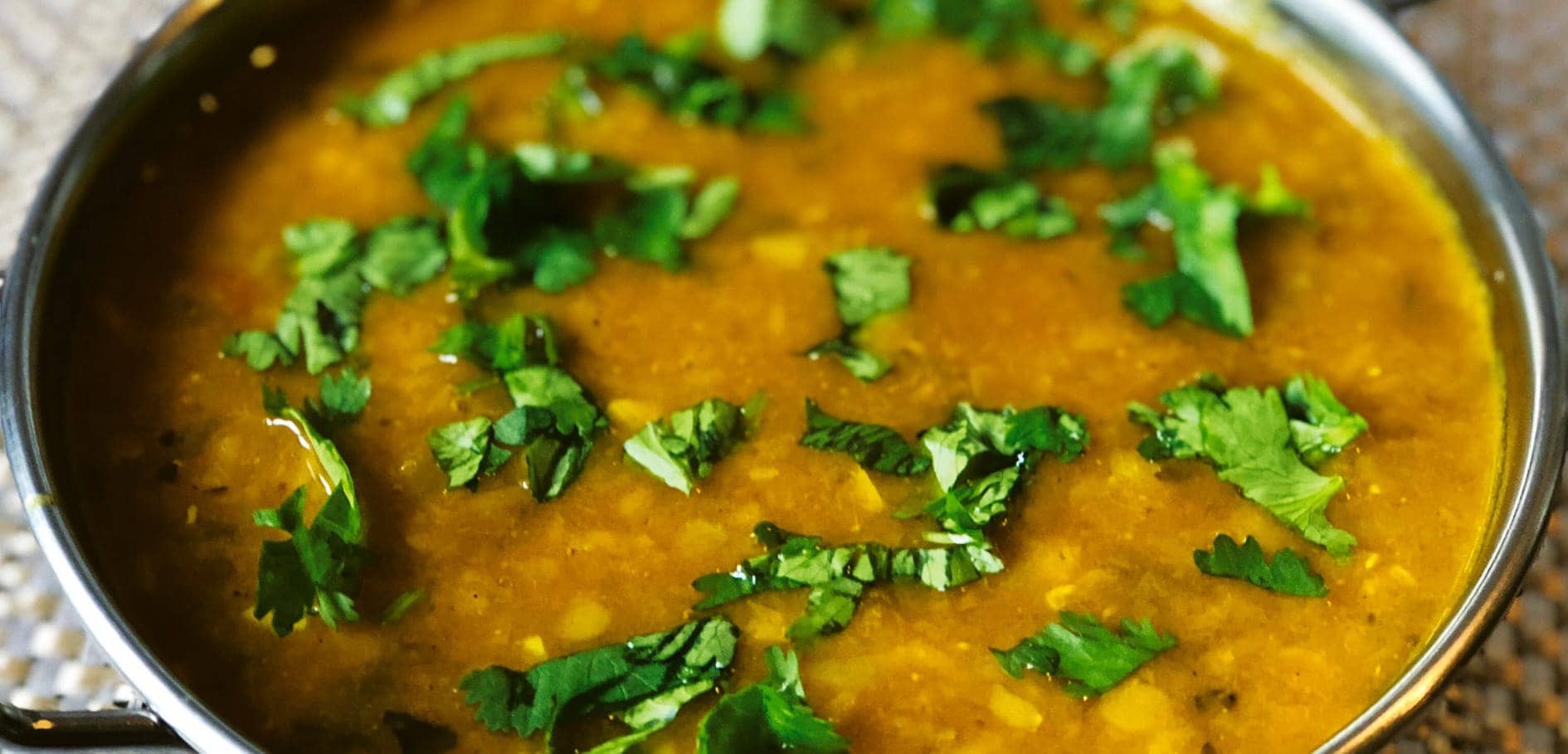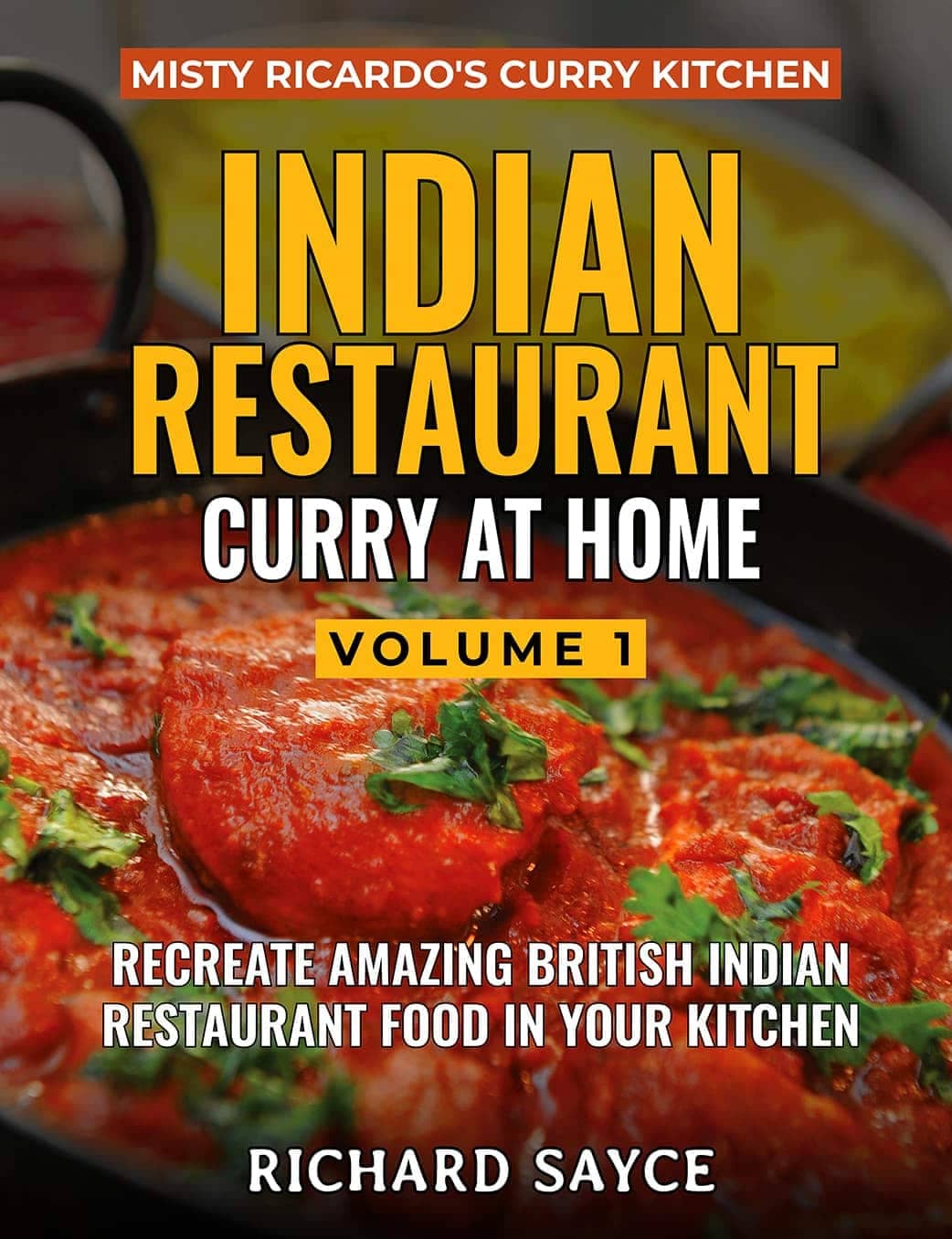Made predominately from lentils, this Indian staple dish is comforting, nutritious and appetising. In my version, rather than using a tarka (whole spices tempered in hot oil then poured over the dhal at the end to complete the dish), the oil and spices are added at the beginning of cooking. This makes it a little simpler to prepare.
This dhal can be used as an ingredient in subsequent curries, with dhansak being the most notable one. The recipe produces enough dhal for five to six single portion dhansak curries, serves six to eight as a snack or side dish, or yields three to four generous main portions.
INGREDIENTS
- 250g Red Split Lentils
- 4 TBSP (60ml) Oil or Ghee (or a combination). Ghee gives a slightly richer flavour.
- 1-2 Tej Patta (Asian Bay Leaves) or regular European Bay Leaves
- 10cm Cassia Bark
- 3-4 Green Cardamom Pods
- 2 dried Chillies (optional)
- 2 TBSP Curry Leaves (optional)
- 80g-100g Onion, very finely chopped
- 4 Garlic Cloves, very finely chopped
- 1½ tsp Ginger, very finely chopped
SPACEHOLDER
- 1½ tsp Cumin Seeds and 1 tsp Coriander Seeds, both freshly toasted and ground to a powder
- 1½ tsp Turmeric
- 1 tsp Madras Curry Powder
- ¼ tsp Garam Masala
- 1¼ tsp Salt
- 3-4 TBSP of fresh Coriander Stalks, finely chopped
- 2 TBSP Double Concentrated Tomato Purée
- 1½ tsp Kasuri Methi
- 1-1½ Litres of Water
METHOD
- Rinse the lentils in cold water several times. You can soak them if you want. The longer you do so, the less time they will take to go soft when cooking.
- Add the oil or ghee to a medium to large saucepan on medium heat.
- Crush the green cardamom pods with the flat of a large knife to split them open. You can use them in their split form, or just use the seeds within, discarding the outer pod.
- When the oil has heated up, add the bay leaves, cassia bark, green cardamom, the optional dried chillies, and fry for 1 minute to infuse the oil with flavour. Stir occasionally.
- If using curry leaves, add them and fry for a further 30 seconds.
- Add the finely chopped onion. Fry for a few minutes until onion has softened, stirring often.
- Add the garlic and ginger and continue frying for another minute, stirring once or twice to avoid the garlic sticking.
- Now add the cumin and coriander powder, turmeric, curry powder, garam masala and salt. Cook for 1-1½ minutes, stirring very often. Add a splash of water to give the spices enough time to fry through properly without them sticking and burning.
SPACEHOLDER
- Add the lentils, tomato purée, kasuri methi, and coriander stalks. Coat well, cook for 1-2 minutes, stirring frequently to stop the lentils sticking to the bottom of the saucepan.
- Add approximately 500ml-750ml water to amply cover the lentils.
- Bring to a gentle boil and leave for 30-40 minutes until the lentils are mushy and have no discernible ‘bite’ to them. Pour in extra water while cooking to maintain a medium thin consistency. Stir occasionally.
- Taste and add more salt if desired.
- Add 2-3 tsp of butter ghee at the end of cooking, to give an extra rich flavour and a nice sheen (optional).
- Serve topped with fresh coriander.
- Dhal is usually served quite runny. If you are making the dhal to use as an ingredient in other curry recipes such as dhansak, cook it longer to thicken it up slightly.
NOTES
- The amount of cooking time may vary considerably, not least depending on which way the wind is blowing! Allow extra cooking time to get the lentils very soft and mushy, adding extra water as required.
- Other types of pulses can be used instead of or in addition to the red lentils, but may take considerably longer to cook.
- Feel free to add or replace whole spices with your own preferences, for example fennel seeds, star anise, panch phoran, black cardamom.
- For extra heat add finely sliced chillies near the end of cooking.
- Unsalted butter may be used instead of butter ghee.
- All spoon measurements are level. 1 tsp=5ml. 1 TBSP=15ml





0 Comments